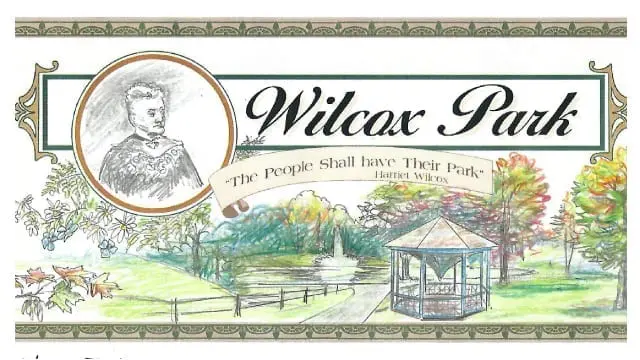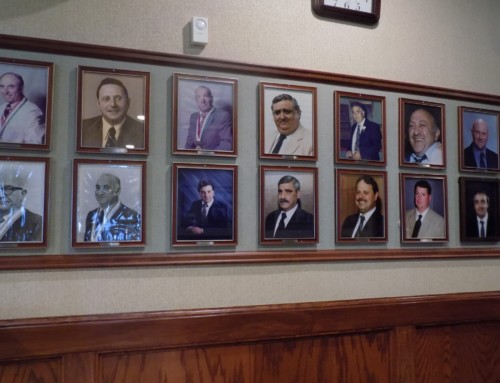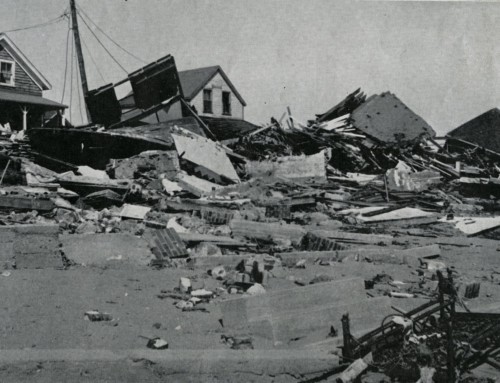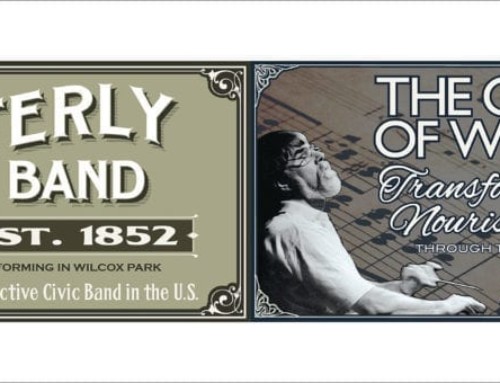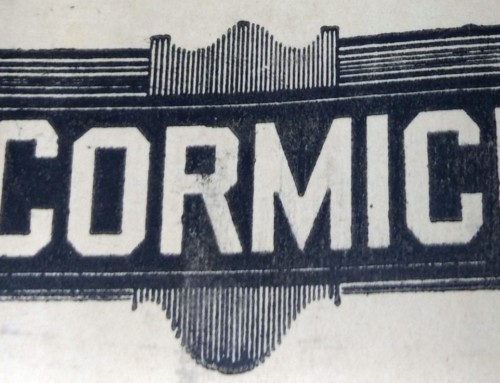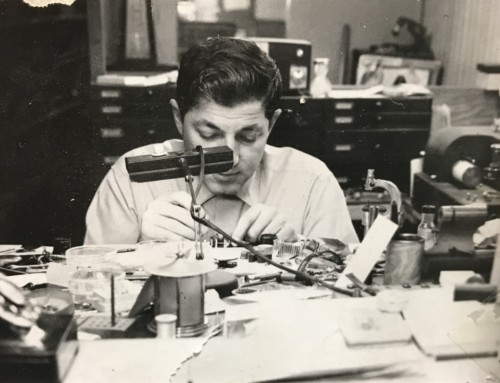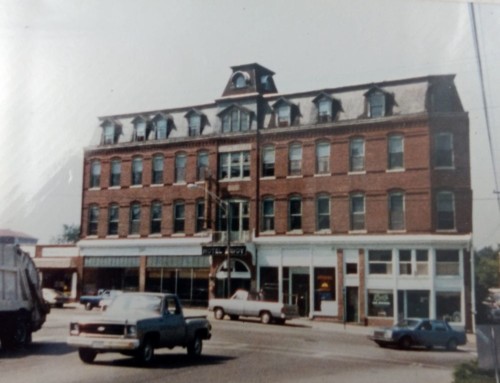The following is part seven in Westerly Life’s “Behind the Murals” series discussing the history behind all of the recently created murals throughout downtown Westerly. The mural discussed below, which depicts Harriet Wilcox and Wilcox Park, can be found near the intersection of High Street and Canal Street in downtown Westerly, next to the Pink Poodle Parlor.
Since the turn of the 20th century, Wilcox Park has been a fixture of downtown Westerly and remains among the town’s most notable features. While many individuals and groups have played a role in maintaining the park’s beauty and prominence, none were more instrumental in the park’s creation than Stephen and Harriet (Hoxie) Wilcox.
The story of the Wilcox family and their benevolence in the improvement of Westerly begins many years before the concept of Wilcox Park was ever considered. Harriet Hoxie was born in Charlestown, RI on January 12, 1829 to Welcome Arnold and Mary Hoxie.[1] When Harriet was 9-years-old, her family moved to Westerly, where she would spend most of her life.[2] In 1865, Harriet married a man named Stephen Wilcox, who was born in Westerly to Stephen Jr. and Sophia (Vose) Wilcox on February 12, 1830.[3]
Throughout their lives, Stephen and Harriet Wilcox acquired a great deal of wealth due to Stephen’s skills as an inventor and engineer. Mr. Wilcox initially developed “many important improvements in steam engines,” but his career really took off once he and George H. Babcock developed a water-tube boiler, known at the time as the “Babcock and Wilcox Type,” which saw use around the world.[4]
Throughout most of his life, Stephen Wilcox was also known for his philanthropy, particularly his contributions to local institutions. Stephen and Harriet lived for a time in both Providence and New York City before purchasing land in Westerly in 1881.[5] In the 1890’s, Mr. Wilcox offered the town of Westerly half of the $50,000 needed to build a library, which was graciously accepted.[6] When Stephen died on November 27, 1893, his loving wife, Harriet, continued her husband’s charitable pursuits for the remainder of her life.
The project which has come to define the legacy of Stephen and Harriet Wilcox is the development of the park which bears their name. Interest in the development of a public park for Westerly reached its height in 1898. On July 19, 1898, an editorial appeared in the Westerly Sun titled “Westerly’s Park: Why Does Westerly Need a Park?”
Many of the points made in this piece reflected sentiments which were promoted by contemporary park advocates across America. Some of the more prominent positions included a need for man to connect with nature, as well as parks being used as an outlet to prevent members of the working class from falling into wicked habits.[7] According to the author, who is called ‘A Friend of Westerly,’ a public park “would go much farther toward arresting the tidal wave of intemperance.”[8]
Five days later, on July 24, 1898, the Sun published a lengthy piece announcing that land, which would be ideal for a public park, was now available. According to this article “the need of a park is becoming more noticeable.” Many of Westerly’s most renowned citizens of the time, including Town Council President Crandall and Councilman Biddles are quoted in support of a public park for Westerly.[9]
On August 23, 1898 a special meeting of the taxpayers of Westerly was held in Armory Hall where a vote was taken regarding whether or not the town should purchase the Rowse Babcock estate on Grove Avenue. In regards to this meeting, the Sun claimed “To argue for the advantages of a public park is unnecessary.”[10]
The principal argument against purchasing this land was an opposition to the tax which would be required to fund the purchase. However, the writer of one letter to the Sun noted “With a grand list of over six millions of dollars, a rapidly increasing population, and a community with intelligence and refined taste, it seems rather of an impotant [sic] argument to say we cannot afford it.”[11]
While the outcome of the August vote is not clear, it was of no matter, as Harriet Wilcox purchased the property from the heirs of Rowse Babcock in October 1898 and presented it to the Westerly Memorial Library Association.[12] It was said at the time that Mrs. Wilcox had an “untiring devotion to the Memorial building,” which included taking her husband’s place on the board of trustees.[13] Plans were then quickly set into motion for the development of a public park in Westerly.
On April 4, 1899, the house at 50 and 52 Broad Street was sold to a man named A.L. Chester for $90 ($2,535.36 in 2017), who was given six weeks to move the house as a condition of the sale.[14] In June 1899, Mrs. Wilcox donated a portion of the land to Westerly School District No. 1 so that they could build a new high school on the property. The high school which was built on this land would stand until Ward Senior High School was completed in the 1930’s.
In a letter to the school district, Harriet wrote “The opportunity has now been placed in my hands to assist the people of this school district in providing better and much needed high school accommodations.”[15] Mrs. Wilcox continued to contribute to the well-being of Westerly for the remainder of her life.
Harriet (Hoxie) Wilcox died in her home at 41 Elm Street on August 31, 1901.[16] The generosity of both Stephen and Harriet Wilcox was championed at the times of their deaths, with many tributes appearing in the Westerly Sun which extolled their acts of kindness towards the town.[17] While it was initially believed that the Wilcoxes contributed only the $25,000 needed to fund the library’s building, it was revealed that they provided more than $100,000 for its construction and maintenance, while also paying many of the library’s bills.[18]
The immense wealth and philanthropy of Stephen and Harriet Wilcox is made apparent by Harriet’s last will and testament, which contains fifty-six separate provisions for dividing her estate, including contributions to several churches in Westerly, as well as other enterprises which depended largely upon her aid. In this will, Harriet also bequeathed $150,000 to the Memorial Library Association, as well as a list nearly two pages long detailing the various works of art which were to be donated to the library for their art annex.[19]
Although she lived long enough to see the creation of Wilcox Park (a name which Harriet is said to have insisted upon as a tribute to her husband), many important developments followed in the decade after her death in 1901. In July 1902, the Westerly Gas and Electric Light Company installed fifteen electric lights on Broad Street for the park and during the same month, a temporary bandstand was built at the intersection of Granite Street and Grove Avenue so that concerts could be held.[20]
Additionally, while the initial gift of the Rowse Babcock estate served as the catalyst for the park’s creation, it was further purchases which allowed it to expand to its current size.
In November 1906, the Trustees of the Park purchased land “from High Street to Grove Avenue” from the estate of Hannah B.W. Brown.[21] Even after her death, this expansion was made possible by Harriet Wilcox, as the purchase was funded by an increase in the value of the funds donated in Harriet’s will.[22] In April 1907, land from the estate of Daniel Douglas was purchased by the Memorial Building Association from Joseph T. Murphy.[23]
Over the course of its 120-year history, Wilcox Park has been an integral part of Westerly’s history. It continues to be the site of many concerts, plays, and other events which are attended by thousands, making it among the most important locations in town.
[su_accordion class=””] [su_spoiler title=”Footnotes” open=”no” style=”default” icon=”plus” anchor=”” class=””]
[1] Gravestone of Harriet A. (Hoxie) Wilcox, River Bend Cemetery, Westerly, Rhode Island, and “Death of Mrs. Harriet H. Wilcox” Westerly Sun, 1 September 1901.
[2] “Death of Mrs. Harriet H. Wilcox” Westerly Sun, 1 September 1901.
[3] Representative Men and Old Families of Rhode Island: Genealogical Records and Historical Sketches of Prominent and Representative Citizens and of Many of the Old Families, (1908), pg. 109.
[4] “Wilcox, The Inventor” Westerly Sun, 20 April 1894.
[5] “Death of Mrs. Harriet H. Wilcox” Westerly Sun, 1 September 1901.
[6] “Death of Mrs. Harriet H. Wilcox” Westerly Sun, 1 September 1901.
[7] “Westerly’s Park. Why Does Westerly Need a Park?” Westerly Sun, 19 July 1898.
[8] “Westerly’s Park. Why Does Westerly Need a Park?” Westerly Sun, 19 July 1898.
[9] “Westerly Should Have a Park.” Westerly Sun, 24 July 1898.
[10] “A Park for Westerly” Westerly Sun, 21 August 1898.
[11] “A Park for Westerly” Westerly Sun, 21 August 1898.
[12] “A Park for Westerly” Westerly Sun, 9 October 1898.
[13] “A Park for Westerly” Westerly Sun, 9 October 1898.
[14] “Babcock House Sold” Westerly Sun, 4 April 1899.
[15] “The Gift Accepted.” Westerly Sun, 28 June 1899.
[16] “Death of Mrs. Harriet H. Wilcox” Westerly Sun, 1 September 1901.
[17] “A Tribute.” Westerly Sun, 8 September 1901.
[18] “A Memorial Sermon.” Westerly Sun, 9 September 1901.
[19] New York, Wills and Probate Records, 1659-1999, New York County, Wills, Vol 0675-0676, 1901-1903, pgs. 147-162.
[20] “Will Light Wilcox Park” Westerly Sun, 13 July 1902 and “Band Stand in the Park” Westerly Sun, 17 July 1902.
[21] “A Larger Park” Westerly Sun, 14 November 1906.
[22] “A Larger Park” Westerly Sun, 14 November 1906.
[23] “More Park Land.” Westerly Sun, 21 April 1907.
[/su_spoiler] [/su_accordion]
